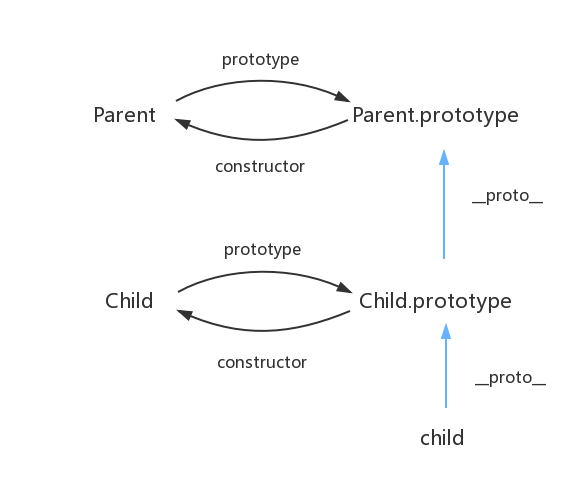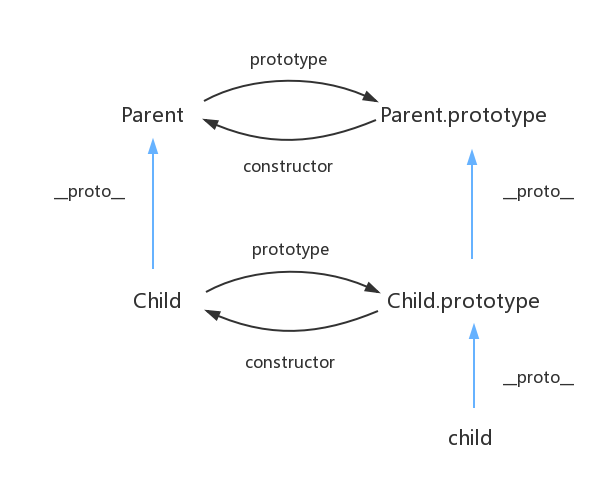# ES5继承与Class继承的区别
# ES5中最优的继承方式: 寄生组合式继承
function Parent (name) {
this.name = name;
}
Parent.prototype.getName = function () {
console.log(this.name)
}
function Child (name, age) {
Parent.call(this, name);
this.age = age;
}
Child.prototype = Object.create(Parent.prototype);
var child1 = new Child('kevin', '18');
console.log(child1);

# ES6 Class继承
Class 通过 extends 关键字实现继承,这比 ES5 的通过修改原型链实现继承,要清晰和方便很多。
以上 ES5 的代码对应到 ES6 就是:
class Parent {
constructor(name) {
this.name = name;
}
}
class Child extends Parent {
constructor(name, age) {
super(name); // 调用父类的 constructor(name)
this.age = age;
}
}
var child1 = new Child('kevin', '18');
console.log(child1);
ES6 的原型链示意图为:

# 区别
es5中子类构造函数与父类构造函数没有关系。 但是es6中子类构造函数继承父类构造函数,也就是子类可以继承父类的静态方法。
Parent.call(this) 与 Super关键字 Parent.call(this) 是先实例化子类对象,然后调用父类构造函数添加属性。 Super关键字是先实例化父类对象,然后返回给子类,调用子类构造函数添加属性。 所以要在调用Super() 后才能使用this